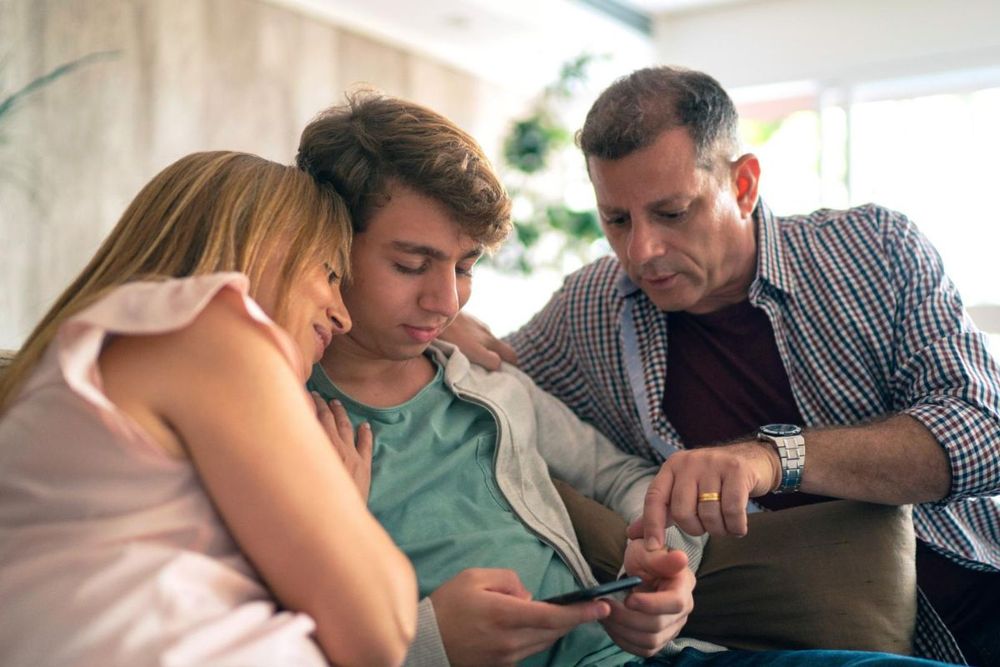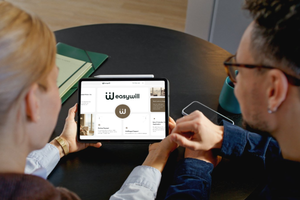- Today, we’re announcing new tools and resources designed to support parents, guardians and teens across our technologies.
- Parents will soon be able to set up supervision tools in VR to all Quest headsets and use new supervision features available with Instagram, like sending invites to their teens to initiate tools and setting specific times to limit their teen’s use. Supervision tools on Instagram are beginning to roll out globally.
- We’re also continuing to add features to help teens better manage the time they spend on Instagram with new nudges and reminders to use our Take a Break feature.
Parental Supervision Tools and Resources for Quest
We’re beginning to roll out parental supervision tools to all Quest headsets. In the Parent Dashboard, parents and guardians can:
- Approve their teen’s download or purchase of an app that is blocked by default based on its IARC-rating.
- Teens 13+ can submit an “Ask to Buy” request, which triggers a notification to their parent.
- The parent can then approve or deny the request from the Oculus mobile app.
- Block specific apps that may be inappropriate for their teen, which will prevent the teen from launching those apps. Apps that can be blocked include apps like web browsers and apps available on the Quest Store.
- View all of the apps that their teen owns.
- Receive “Purchase Notifications,” alerting them when their teen makes a purchase in VR.
- View headset screen time from the Oculus mobile app, so they’ll know how much time their teen is spending in VR.
- View their teen’s list of Oculus Friends.
- Block Link and Air Link to prevent their teen from accessing content from their PC on their Quest headset.
For parents to link to their teen’s account, the teen must initiate the process, and both the parent and teen have to agree.
We’re also launching our new Parent education hub, including a guide to our VR parental supervision tools from ConnectSafely to help parents discuss virtual reality with their teens.
This is just a starting point, informed by careful collaboration with industry experts, and we’ll continue to grow and evolve our parental supervision tools over time.
Expanding Parental Supervision Features on Instagram
On Instagram, parents and guardians can now:
- Send invitations to their teens to initiate supervision tools. Initially, only teens could send invitations.
- Set specific times during the day or week when they would like to limit their teen’s use of Instagram.
- See more information when their teen reports an account or post, including who was reported, and the type of report.
If you already have supervision set up on Instagram in the US, these updates are now available in addition to our other supervision tools. Starting this month, these tools will begin rolling out to other countries including the UK, Japan, Australia, Ireland, Canada, France and Germany, with plans to roll out globally before the end of the year. Visit our Family Center to learn more.
Support Teens’ Time on Instagram
On Instagram, teens will start to see new nudges. Teens in certain countries will see a notification that encourages them to switch to a different topic if they’re repeatedly looking at the same type of content on Explore. This nudge is designed to encourage teens to discover something new and excludes certain topics that may be associated with appearance comparison.
We designed this new feature because research suggests that nudges can be effective for helping people — especially teens — be more mindful of how they’re using social media in the moment. In a study on the effects of nudges on social media use, 58.2% of respondents agreed or strongly agreed that nudges made their social media experience better by helping them become more mindful of their time on-platform. Our own research shows they’re working too: during a one-week testing period, one in five teens who saw our new nudges switched to a different topic.

We launched our Take a Break feature to remind people to take time off Instagram. Soon, we’ll launch new reminders for teens to turn on Take a Break when they’ve been scrolling in Reels for a period of time. The reminders will feature Reels developed by young creators like @foodwithsoy, @abraxaxs and @mayasideas who share their own tips for taking a break and why it’s a good idea to get off social media for a bit. These are being tested in the US, UK, Ireland, Canada, Australia and New Zealand now, and they’ll launch in those and additional countries later this summer.
We’re also empowering US-based young creators through funding and education to share more content on Instagram that inspires teens and supports their well-being. An Expert Steering Committee of experts in child psychology and digital literacy will provide guidance on evidence-based ways for creators in the program to use language that strengthens emotional well-being and self image, how to create responsible content online and how creators can look after themselves and their communities on and offline.

Expert-backed Resources
We’re adding new articles to the Family Center education hub from organizations like ParentZone, Media Smarts, National Association for Media Literacy Education and Cyberbullying Research Center. These articles give parents helpful tips on how to talk to teens about different online topics such as connecting safely with others and how to be more self-aware online. We’ll continue working with experts and organizations to make even more resources for parents and guardians available. We also are adding a new privacy page with more information for teens about privacy settings, defaults and features across Quest, Instagram, Facebook and Messenger.
How We Build Safe Experiences and Products for Teens
To build products and experiences that help keep young people safe, we work directly with teens, parents and experts. Over the past few years, we’ve incorporated best practices from the United Nations (UN), the Organization for Economic Co-operation and Development (OECD) and children’s rights groups.
Today, we’re sharing more detail on an internal process we created to help us apply the UN’s Convention on the Rights of the Child (UNCRC) in our product development. The Convention emphasizes that the “best interests of the child” should steer the creation of services, products, and experiences for young people. Our process guides our teams on how to apply this standard when developing digital experiences for people under 18 using our technologies. Read more about our Best Interests of the Child work, and how it informs the experiences we create for young people.
“It is really encouraging to know that Meta has been listening to young people and their parents and creating tools that encourage timely conversations. At Parent Zone, we know how difficult it can be for parents when they feel locked out of their children’s digital worlds. With these new tools, we are seeing a shift to greater partnership between families and platforms and that is an incredibly positive step.”
- Vicki Shotbolt, founder and CEO of Parent Zone
“With VR technologies increasingly gaining traction, and the Quest becoming a favorite product of many youth, parents and guardians will now have access to a suite of tools to safeguard and stay involved with their teen's participation and experiences. We're glad that Meta continues to seek out data-driven insight from scholars and practitioners in various social scientific fields to build solutions that seek to equip youth, families and educators with the tools and resources they need to safely enjoy exploring and interacting on their favorite platforms.”
- Dr. Sameer Hinduja, Co-Director of the Cyberbullying Research Center
News Source: Instagram









